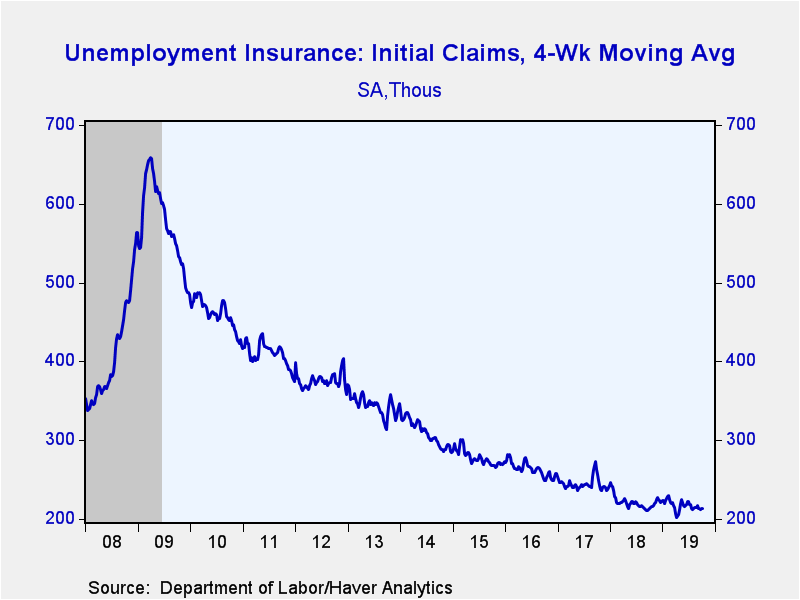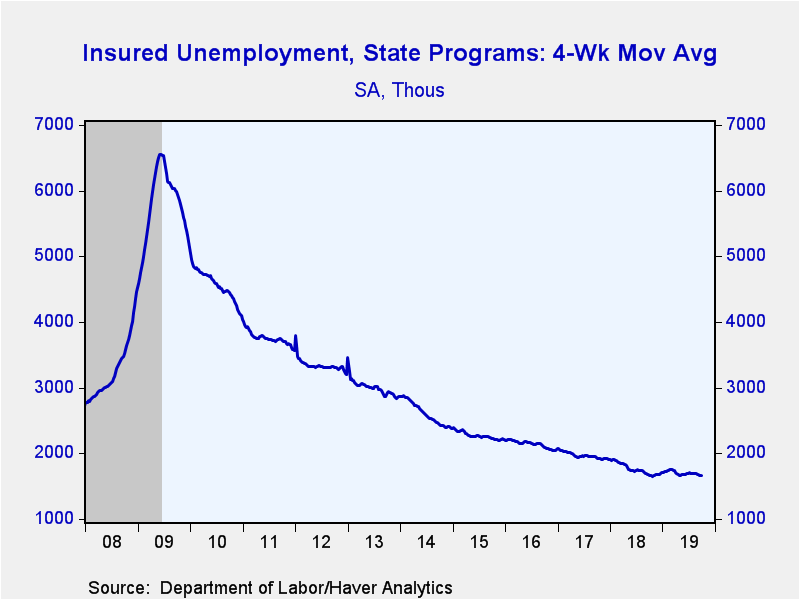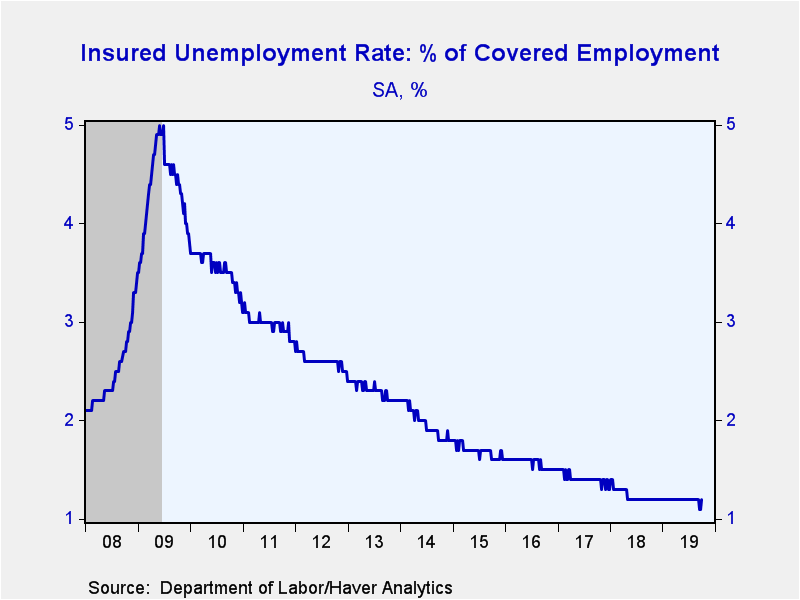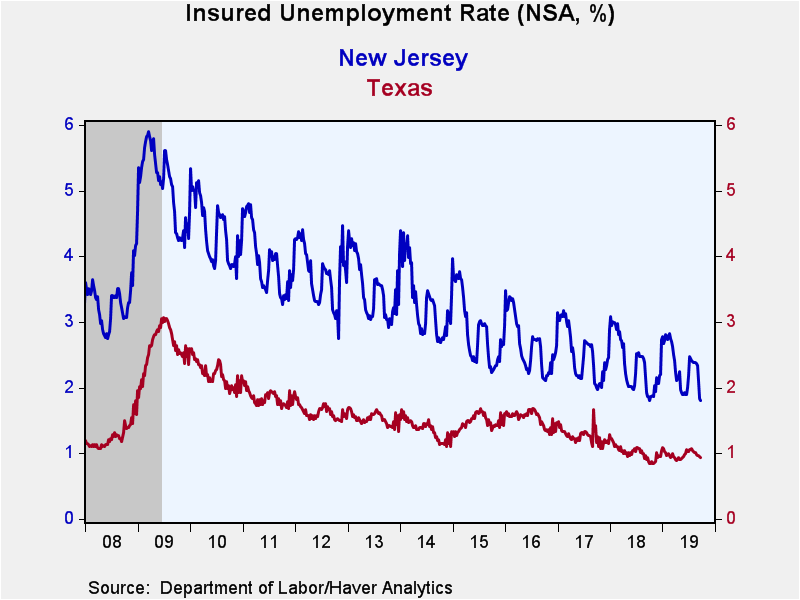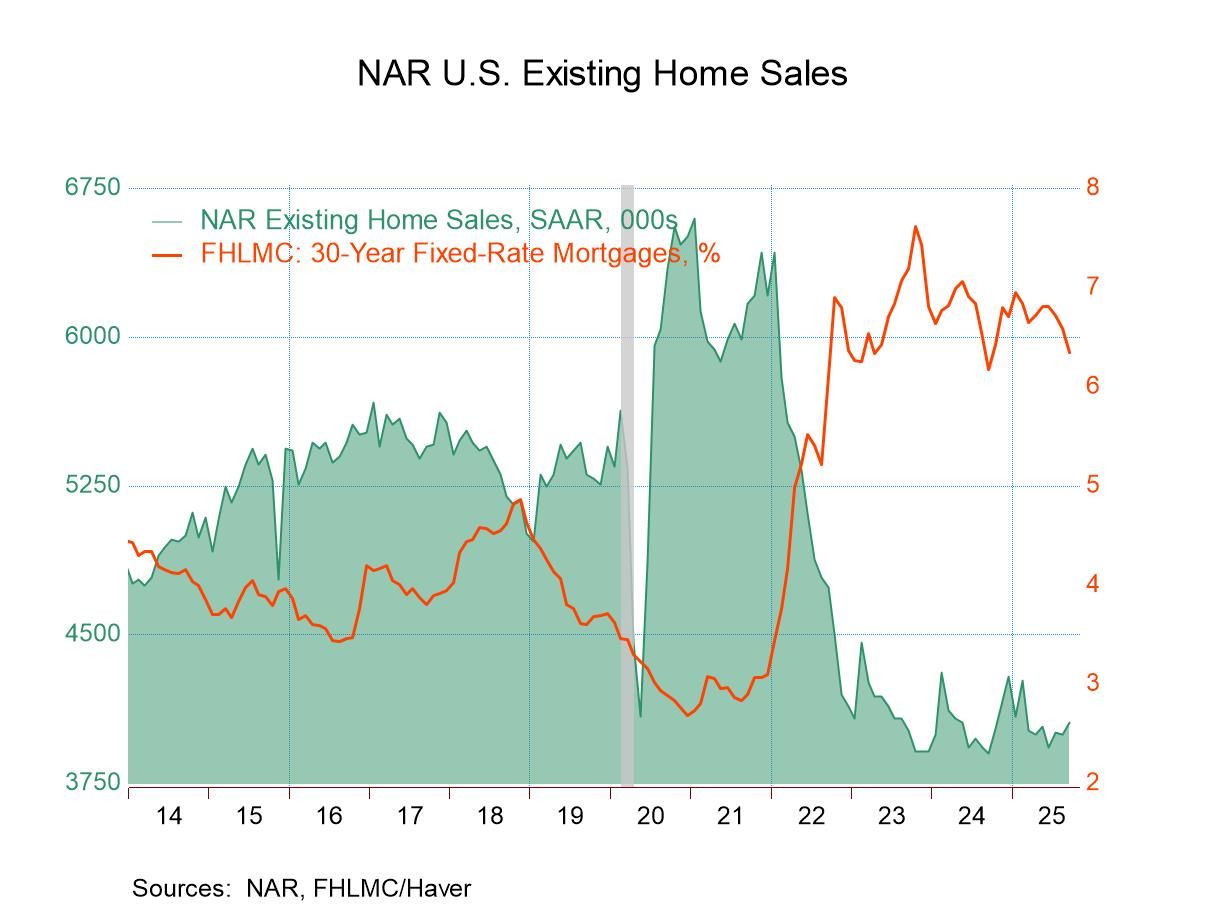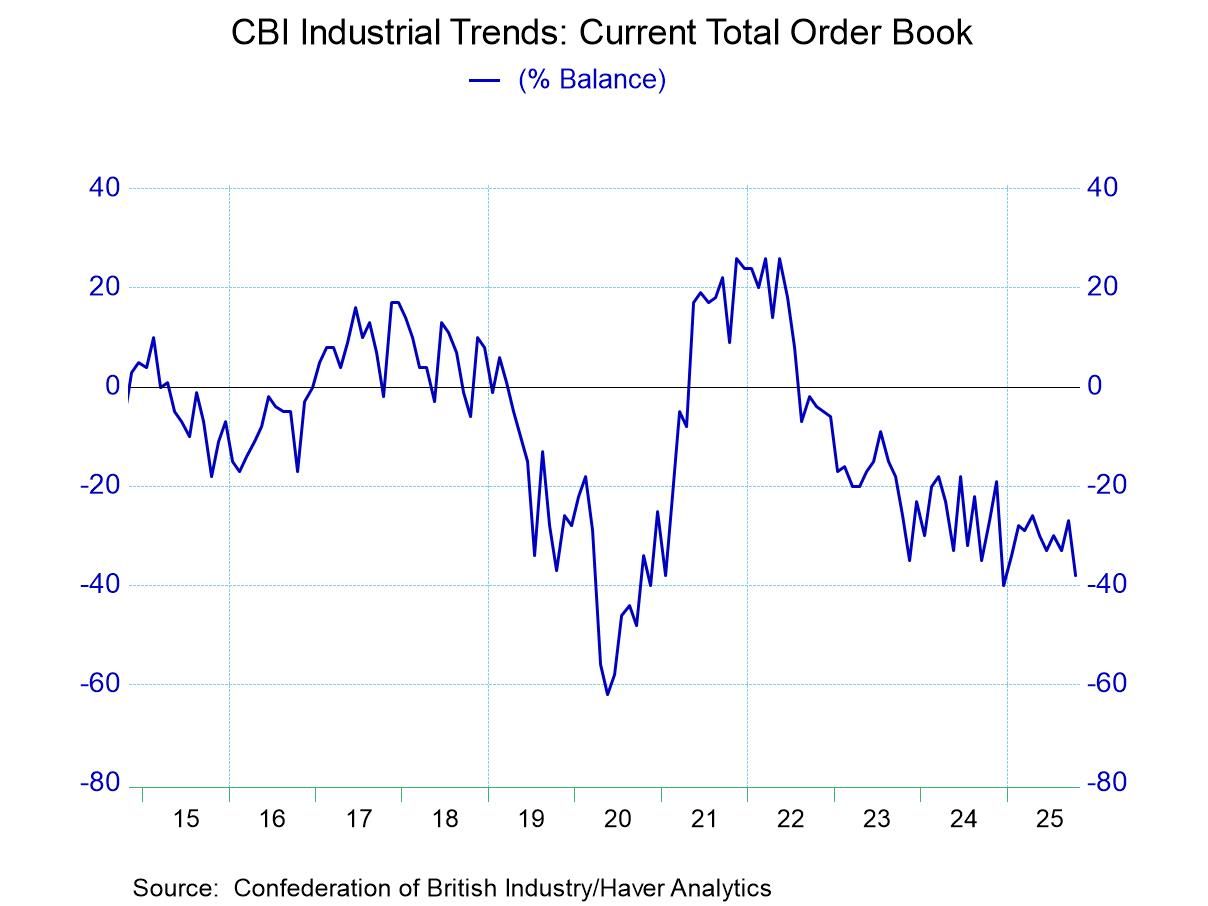 Global| Oct 10 2019
Global| Oct 10 2019U.S. Initial Unemployment Insurance Claims Decrease Modestly
by:Tom Moeller
|in:Economy in Brief
Summary
Initial claims for unemployment insurance eased to 210,000 (-0.9% y/y) during the week ended October 5 from 220,000 in the previous week, revised from 219,000. The Action Economics Forecast Survey expected 217,000. The four-week [...]
Initial claims for unemployment insurance eased to 210,000 (-0.9% y/y) during the week ended October 5 from 220,000 in the previous week, revised from 219,000. The Action Economics Forecast Survey expected 217,000. The four-week moving average of initial claims rose 1,000 to 213,750. During the last twenty years, there has been a 68% correlation between the number of initial claims and the m/m change in nonfarm payrolls.
Continuing claims for unemployment insurance rose to 1.684 million (+1.0% y/y) in the week ending September 28 from 1.655 million in the prior week, revised from 1.651 million. Modest as the year-to-year increase is, it is the first positive such comparison since January 2010. The four-week moving average of claimants was 1.665 million, up from 1.662 million the week before.
The insured rate of unemployment for the week ending September 28 ticked back up to its longstanding 1.2% after holding for two weeks at 1.1%, which is the record low. Data on the insured unemployment rate go back to 1971.
Insured rates of unemployment vary widely by state. During the week ending September 21, the lowest rates were in South Dakota (0.19%), Nebraska (0.23%), North Dakota (0.32%), New Hampshire (0.41%) and Utah (0.41%). The highest rates were in Pennsylvania (1.47%), Alaska (1.54%), Connecticut (1.55%), California (1.62%), and New Jersey (1.80%). Among the other largest states by population, the rate was 0.93% in Texas, 0.46% in Florida, and 1.11% in New York. These state data are not seasonally adjusted.
Data on weekly unemployment claims going back to 1967 are contained in Haver's WEEKLY database, and they are summarized monthly in USECON. Data for individual states are in REGIONW. The expectations figure is from the Action Economics Forecast Survey, carried in the AS1REPNA database.
| Unemployment Insurance (SA, 000s) | 10/05/19 | 09/28/19 | 09/21/19 | Y/Y % | 2018 | 2017 | 2016 |
|---|---|---|---|---|---|---|---|
| Initial Claims | 210 | 220 | 215 | -0.9 | 220 | 244 | 262 |
| Continuing Claims | -- | 1,684 | 1,655 | 1.0 | 1,756 | 1,961 | 2,135 |
| Insured Unemployment Rate (%) | -- | 1.2 | 1.1 |
1.2 |
1.2 | 1.4 | 1.6 |
Tom Moeller
AuthorMore in Author Profile »Prior to joining Haver Analytics in 2000, Mr. Moeller worked as the Economist at Chancellor Capital Management from 1985 to 1999. There, he developed comprehensive economic forecasts and interpreted economic data for equity and fixed income portfolio managers. Also at Chancellor, Mr. Moeller worked as an equity analyst and was responsible for researching and rating companies in the economically sensitive automobile and housing industries for investment in Chancellor’s equity portfolio. Prior to joining Chancellor, Mr. Moeller was an Economist at Citibank from 1979 to 1984. He also analyzed pricing behavior in the metals industry for the Council on Wage and Price Stability in Washington, D.C. In 1999, Mr. Moeller received the award for most accurate forecast from the Forecasters' Club of New York. From 1990 to 1992 he was President of the New York Association for Business Economists. Mr. Moeller earned an M.B.A. in Finance from Fordham University, where he graduated in 1987. He holds a Bachelor of Arts in Economics from George Washington University.


